
|

|

|
|
|
 |
 |
At Fantastic Plastic, when we shoot your project we use a wide variety of equipment.
Whether on location or in our studio, you'll see cameras, lights, reflectors, monitors and such that
might crop up on any normal film shoot... plus we have the advantage of a couple of "extra toys" that
many production companies don't.
|
|
 |
 |
|
The URSA 12K Pro camera from Blackmagic Design is the most exciting innovation we've seen in years, and is usually our primary camera.
It shoots in astounding 12K resolution, with
80 MILLION pixels in every frame. That's more than forty times the resolution of HD video.
It's a real hybrid, providing the unmatched beauty of 35mm film images, but with the ease of production and lower cost that you'd usually expect from video.
The URSA's 12K sensor captures true Super35mm images with our Leitz-Panavision cinema lenses.
Data is stored in the on-board 10TB solid state recorder and can be immediately imported into our DaVinci Resolve color grading and editing suite.
|
|
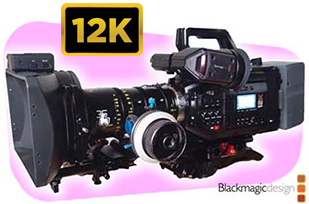 |
|
The URSA 12K shoots with an extremely wide film-like latitude, and can photograph in a variety of frame rates for special needs like ultra-slow motion. The result is a truly amazing 35mm picture.
|
|
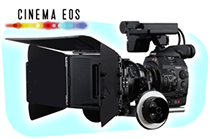 |
We also still love the Canon C300PL, and you'll see it on plenty of shoots. The Cinema EOS system's 4K sensor captures true Super35mm film images, and also uses our Leitz-Panavision cinema lenses. The C300PL shoots with an extremely wide film-like latitude, too, and is nimble enough to go anywhere, anytime.
|
|
|
|
|
|
 |
 |
|
|
|
|
|
|
|
Different projects have different needs, so we maintain a complete arsenal of various cameras. From Canon to Blackmagic Design to DJI, we have an arsenal of more than a dozen cameras with up to 12K resolution. Two of them even fly!
|
|
|
 |
|
|
Our cameras pairs with any (or all!) of our 14 cinema lenses —
including our Lietz-Panavision superspeed primes and our DZOFILM cine zoom lens.
 |
 |
|
|
Of course, something has to hold these cameras up. We have the usual assortment of tripods (we use
OConnor, Mitchell, Vinten, and Universal sticks, all with OConnor and/or Mitchell fluid heads), but
we have a few more camera support toys too...
|
|
|
How about a cool dolly shot without using a dolly?
We utilize four camera siders that allow truck and dolly shots in places where it would be physically impossible to set up a cumbersome dolly and track.
Now great dolly shots that used to take a long time (and space and equipment) can happen instantly.
Plus, computerized motion control means shots are precise and repeatable. We also have a curved slider that was built to our custom specs, so cool arcing shots can happen almost anywhere.
|
|
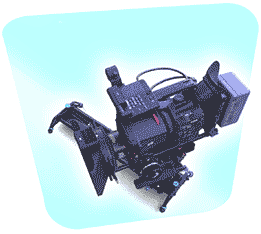 |
|
|
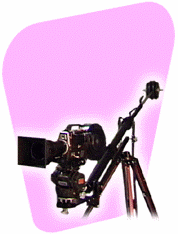 |
Pans, tilts, dollies, and trucks are the most common camera moves you see, but our director often
likes to add VERTICAL movement for an extra dynamic punch. We accomplish this with our Losmandy jib,
which allows us to get sky-high crane shots. This jib also compacts down tiny enough
for use in almost any room, where even a very short crane or tongue move can add visual drama. Unlike
a big crane, the jib easily travels and is used on many of our location shoots.
|
|
Sometimes you just have to take to the air!
Aerials in bygone days used to be a big deal.
Our DJI Mavic Pro and Mini 3 Pro quadcopters are tiny, and easy enough to bring along on almost any shoot. But don't let their size fool you... these aren't just "drones" but full-featured aerial camera platforms — with stabilized Ultra-HD 4K cameras for spectacular images. Aerial footage isn't always the right choice, but when it is... wow.
|
|
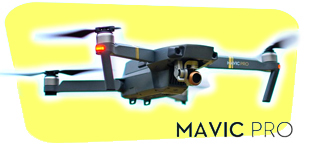 |
|
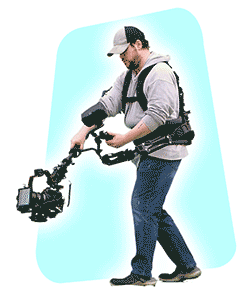 |
What's the Tilta Float?
It's an amazing camera stabilization system —
like a Steadicam on steroids.
The Float really lives up to its name and literally floats the 6K UltraHD camera through the air — walking, running, up and down stairs, whatever.
Grant Jordan is our expert Tilta Float operator because, well, he has the youngest bones around here.
Fortunately he's a total pro with it, too.
|
|
|
To get perfect shots, control is everything.
The Ronin RS3 Pro stabilizer handles all kinds of tasks where smooth precise camera moves are needed. Whether handheld, gliding along on the Tilta Float, or high in the air on our jib, the Ronin not only keeps things rock steady, but can motion track and keep subjects framed — and focused — perfectly, capturing amazing 6K images.
|
|
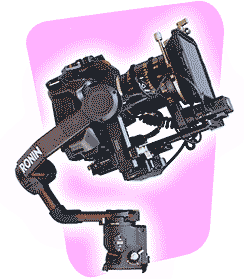 |
|
|
|

 |
|
|
One of the things we are known for is making people look really good. Sometimes there's nothing prettier than available light... but often it takes a lot of artificial lighting to look beautiful and, well... natural. Ironic, huh?
|
|
One of the biggest revolutions in cinematography has been the development of powerful LED lighting. No more big hot lights... our extensive arsenal of lighting instruments is now almost completely made up of LED fixtures. They're cool, faster to set up, give beautiful light, and are all self-contained with batteries. Even our biggest "Hollywood-sized" lights need no external power, so we're never running "stingers" (extension cords), looking for outlets, or tripping our clients' breakers. LEDs are a game changer.
|
|
 |
|
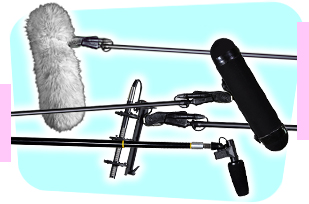 |
We love to make you look great, but it's just as important to sound good, too. Boom microphones often sound much better than clip-on "lavalier" mics, so you'll usually see boom mics floating around over our sets. Our favorites are made by Sennheiser, but we have a variety of mics for different applications. We're sometimes asked "What's with the fur?" That's a "windjammer" and allows mics to be used even in very high breezes with no wind noise at all. Fun fact: in the industry that's known as the "dead cat." Ewww.
|
|
|
 |
Of course shooting is just one piece of the puzzle. To see where the post-production happens for your
project once principal photography is complete, visit the Studios page.
|
|
|
|
 |
|

|
| |


